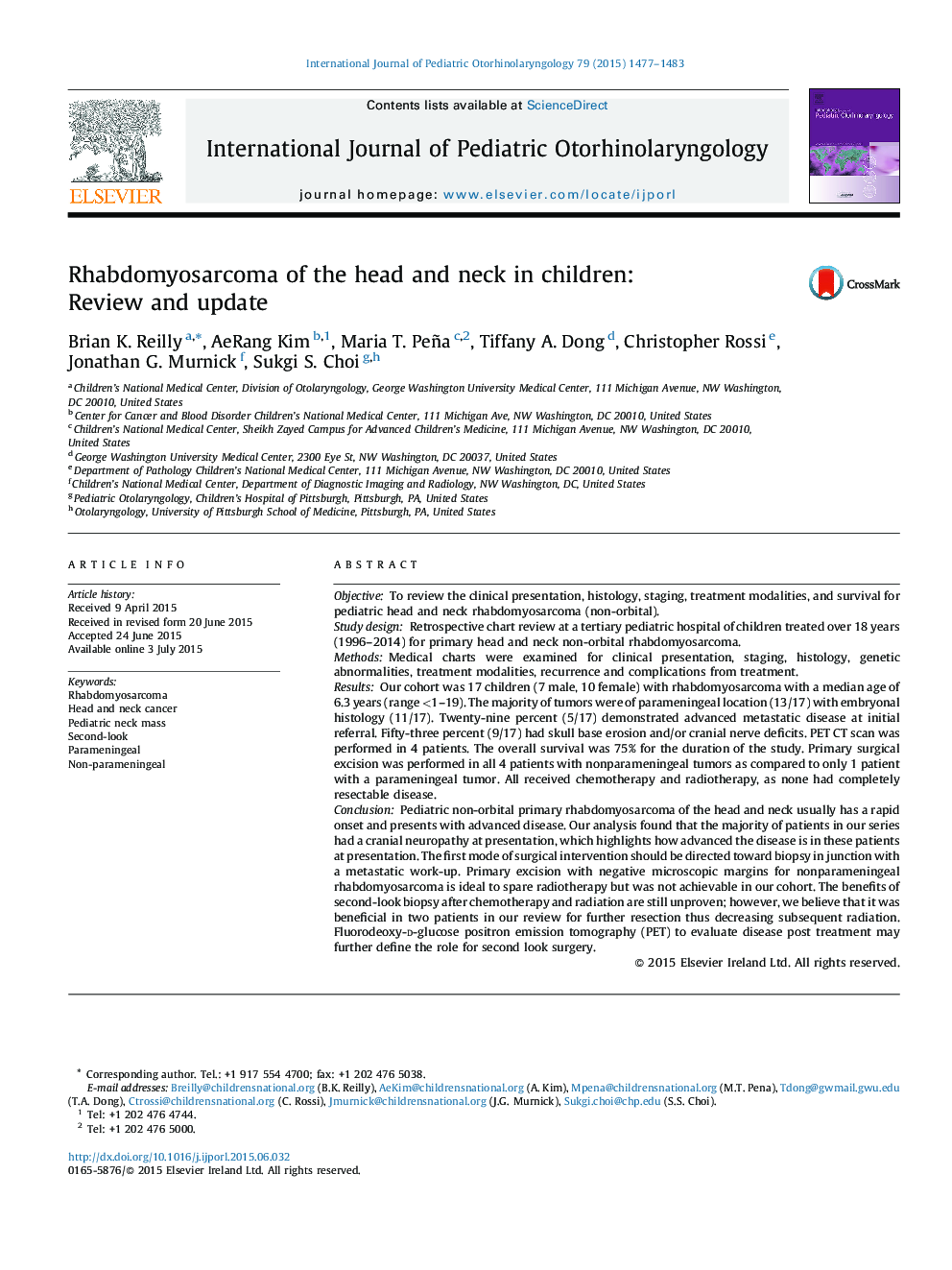| Article ID | Journal | Published Year | Pages | File Type |
|---|---|---|---|---|
| 4112093 | International Journal of Pediatric Otorhinolaryngology | 2015 | 7 Pages |
ObjectiveTo review the clinical presentation, histology, staging, treatment modalities, and survival for pediatric head and neck rhabdomyosarcoma (non-orbital).Study designRetrospective chart review at a tertiary pediatric hospital of children treated over 18 years (1996–2014) for primary head and neck non-orbital rhabdomyosarcoma.MethodsMedical charts were examined for clinical presentation, staging, histology, genetic abnormalities, treatment modalities, recurrence and complications from treatment.ResultsOur cohort was 17 children (7 male, 10 female) with rhabdomyosarcoma with a median age of 6.3 years (range <1–19). The majority of tumors were of parameningeal location (13/17) with embryonal histology (11/17). Twenty-nine percent (5/17) demonstrated advanced metastatic disease at initial referral. Fifty-three percent (9/17) had skull base erosion and/or cranial nerve deficits. PET CT scan was performed in 4 patients. The overall survival was 75% for the duration of the study. Primary surgical excision was performed in all 4 patients with nonparameningeal tumors as compared to only 1 patient with a parameningeal tumor. All received chemotherapy and radiotherapy, as none had completely resectable disease.ConclusionPediatric non-orbital primary rhabdomyosarcoma of the head and neck usually has a rapid onset and presents with advanced disease. Our analysis found that the majority of patients in our series had a cranial neuropathy at presentation, which highlights how advanced the disease is in these patients at presentation. The first mode of surgical intervention should be directed toward biopsy in junction with a metastatic work-up. Primary excision with negative microscopic margins for nonparameningeal rhabdomyosarcoma is ideal to spare radiotherapy but was not achievable in our cohort. The benefits of second-look biopsy after chemotherapy and radiation are still unproven; however, we believe that it was beneficial in two patients in our review for further resection thus decreasing subsequent radiation. Fluorodeoxy-d-glucose positron emission tomography (PET) to evaluate disease post treatment may further define the role for second look surgery.
